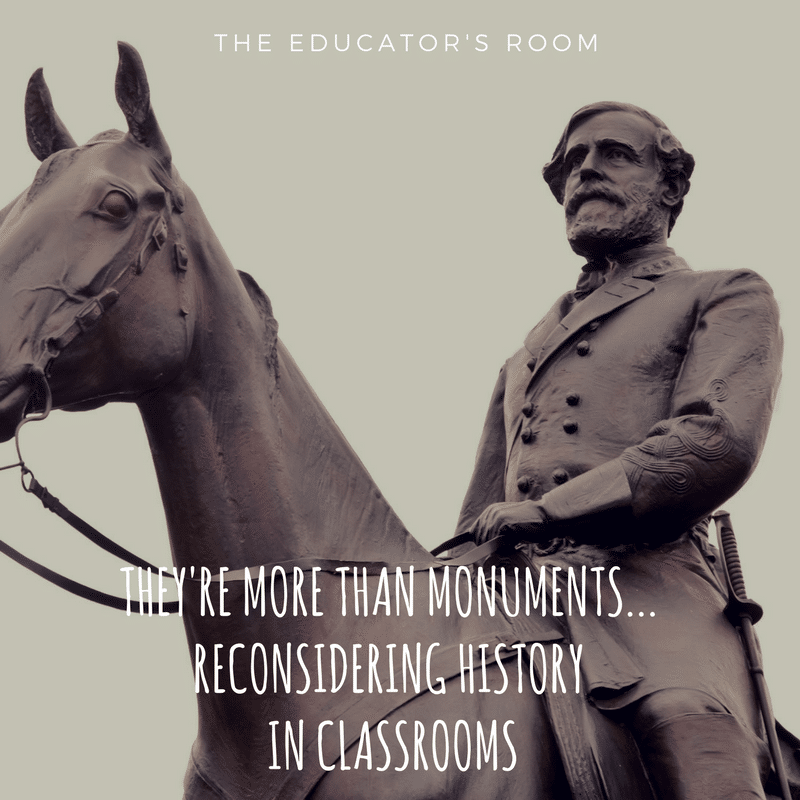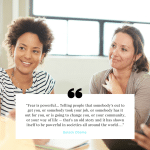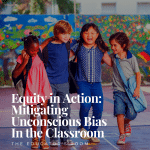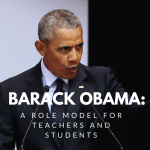by: Daniel Osborn
History educators are returning to their classrooms this fall after a summer that was full of discord surrounding the fate of monuments venerating Confederate leaders. The removal or proposed removal of statues from New Orleans, Louisiana to Charlottesville, Virginia exposed social divisions and revealed the divergent historical narratives told in this country. For history teachers, this poses a challenge for navigating conversations with students around representation, commemoration, and the racialized history of the U.S. But there is also the added responsibility to reflect on the role of schools, not only monuments, in representing the past and constructing memories in the present.
Monuments are a part of a cultural curriculum. They teach lessons outside the classroom. They are concrete physical narratives that individuals read as they encounter them. However, they do not strive to be neutral. Monuments are not devoid of values. Rather, they exist to crystallize and showcase a set of values. Often, monuments are forged to illuminate a sense of glory, pride, and accomplishment. They display dominant cultural messages. As an individual or cause is sanctified, these symbols are available for public consumption. Here, there is power to influence perceptions of the past and notions of collective identity in the present.
Yet monuments are not unique in this respect. Classrooms are also social sites where certain perspectives and interpretations may become cultural orthodoxy. Educators are involved in a complicated process of developing students intellectually and emotionally. But students and teachers are also engaged in a process of socialization. Part of this process is being exposed to narratives that, in turn, play a role in fostering collective memories and identity.
The challenge for history educators is to appreciate their role in making determinations about the narratives they construct and offer students in the classroom. Reflecting on the ways they represent the past and the connotation they ascribe to individuals, communities, and events ensures students are not passively imbibing a single and normative rendition.
Monuments often sanitize the past. They privilege certain portrayals while displacing others. They purport to be transparent and truthful. In reality, they confuse the past with memories of the past.
[bctt tweet=”In reality, they confuse the past with memories of the past. ” username=””]
For history teachers, mindfulness of this distinction is fundamental to ensuring schools and the knowledge found there differs from certain aspects of the cultural curriculum that are such divisive and powerful instruments in shaping attitudes and amplifying ideologies.
These observations regarding the problems of memory and representation are not novel. In 1933, Carter G. Woodson explored the psychic trauma African-Americans experience when canonized knowledge is devoid of any reference to their contribution to humanity. In 1935, W.E.B. Du Bois lamented the propaganda of history when it conceals the past and props up distortions that are tantamount to a form of historical amnesia and social indoctrination. In 1978, Edward Said unpacked the prejudices behind the knowledge that claims to be irrefutably objective and essentially true. In 1995, James Loewen cried out against the lies found in history textbooks that romanticize, obscure, and distill the past into a story of linear progress. These thinkers all commented on the misconception that the past is discovered rather than constructed by historians and teachers who exert power in making decisions of emphasis, selection, interpretation, and concealing when producing narratives.
For teachers, there is a social imperative to appreciate the centrality of their role in socializing students by shaping knowledge when representing the past. The classroom is a social crucible in certain respects. It is a fulcrum in others. It can be a space where dominant views are reinforced and dispensed for students to internalize. But it can also be a venue for introducing a marketplace of contending perspectives.
This alternative vision of the classroom experience can be transformative. Unlike a static monument that radiates a message, educators can pose questions and democratize the process of assigning meaning to the past. This problem-posing approach to history education does not rest on social transmission but instead empowers students to develop their capacity for critical thought. It engenders discernment. It redistributes the power to grapple with the past, posit interpretations, and contribute to historical and social discourses between and among teachers and students.
In an age when people are challenging the messages of certain monuments, history teachers have an opportunity and responsibility to engage students in critical interrogations of the conflicting ways the past is understood. They can nurture students’ ability to deconstruct received truths. This act may demystify contemporary debates for students. This type of pedagogy may encourage a more inclusive learning experience that allows students to challenge their own preconceptions and entertain perspectives that can shift their consciousness. Yet, before any of this happens, history teachers must also reflect on the content they bring to their students and their own positioning vis-a-vis this past.






